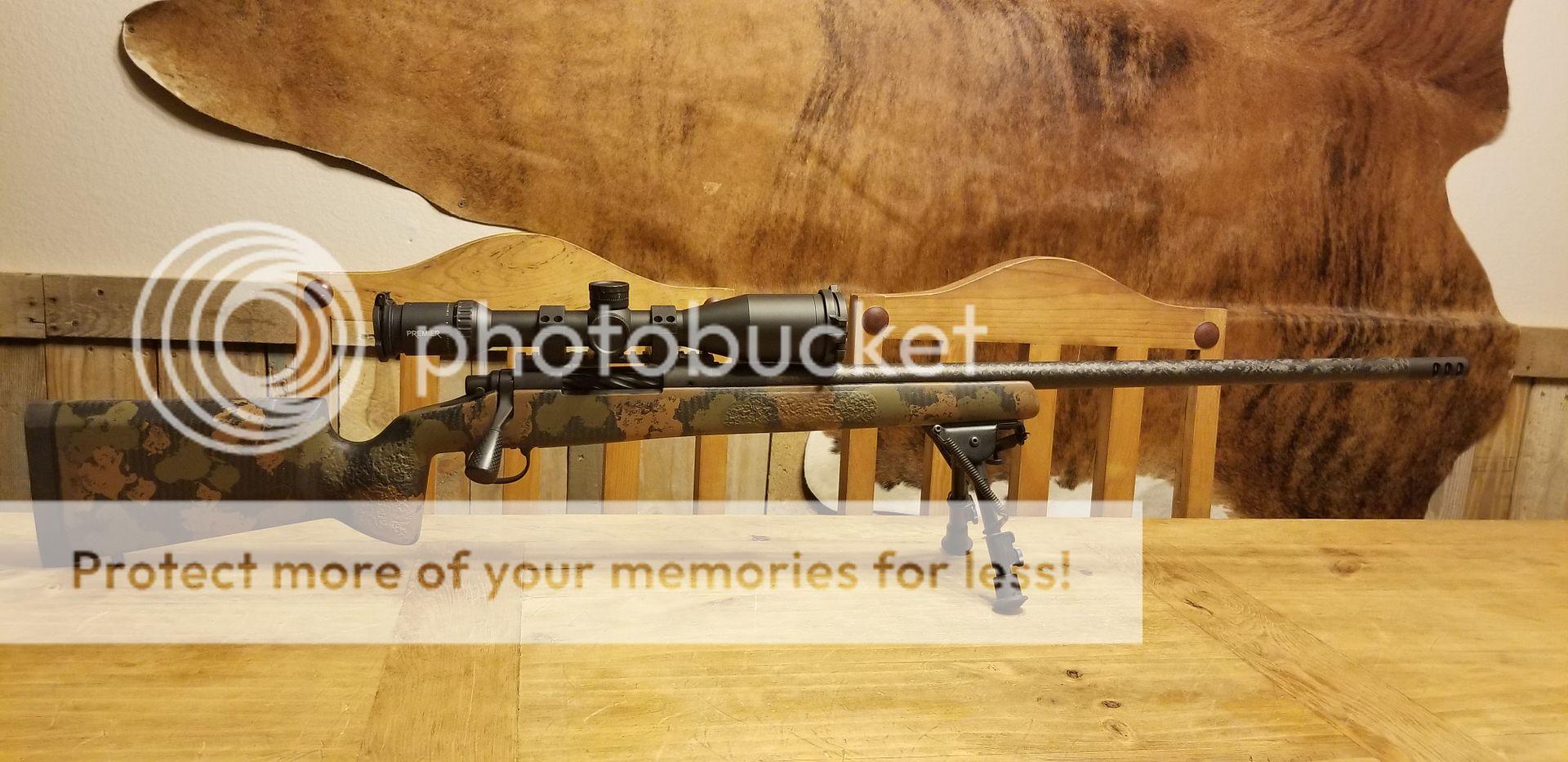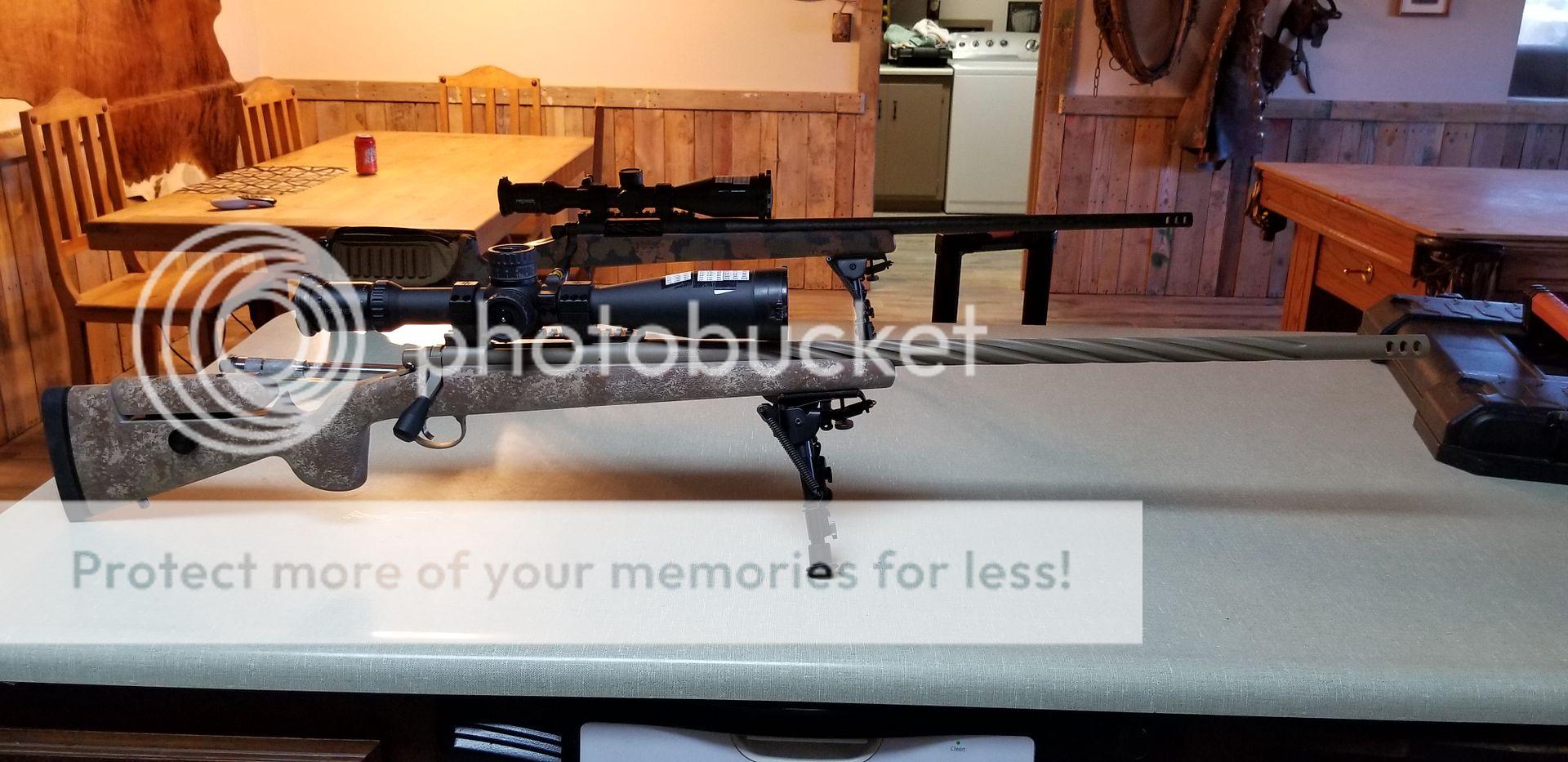I have 2 lighter weight
HUNTING rifles that I am currently using for deer/elk.
1st: 7RM built by Phoenix Custom Rifles
R700 LA BDL trued
26" Bartlein #3B fluted 1:8.5" w. APA Micro Bast brake
Timney CE trigger
Manners EH-2
Seekins 20MOA alloy Picatinny rail
Seekins 34mm low alloy rings
S&B PMII 3-20x50 w. Vortex Lo Pro level
10lbs 9oz w. cheek pad and sling
180 Hybrid @ 2996fps
Shoots .1-.2 out to 1000+. Sub 3" @ 1000. 5" @ 1542.

I have not noticed a POI shift from cold bore to 3 consecutive shots immediately following with the Bartlein.
Cold Bore shot:

3 shot group immediately following CBS above.

2nd: .280AI built by AxisWorks
R700 LA BDL trued
26" Proof Research Sendero Light 1:9" w. Hawkins 3 port
Shilen Match trigger
Manners EH-1
Seekins 20MOA Picatinny rail
Seekins 30mm low alloy rings
Premier Heritage Light Tactical 3-15x50 w. Flatline Ops level
Carbon Fiber tactical knob
Alloy bolt shroud
Fluted bolt body
8lbs 15oz w. cheek pad & sling
175 Berger Elite Hunter @ 2975fps (hot load)
Shoots .2-.3s out to 1000. Sub 3" @ 921. 6" @ 1565.

3 shot group during final sight in (CBS+2 more)

Moved up and right, put these 3 down immediately following first 3 shots. (don't mind the .204" hole)

I am not worried about barrel heating up, as if I need to take more than 2 or 3 shots with a hunting rifle, there is something wrong.
As for weight, I think the Proof might save 6-10oz over a lighter contoured (#3 to #4) steel barrel. I lost almost a full pound by going 26" Proof over 28" Shilen #4. Fluting saves 2-10 oz depending on barrel contour, number of flutes, depth of flutes, and straight or helical fluting. My Rock Creek 28" Rem Varmint contour saved 9.5oz by deep helical fluting. Yet my 26" Bartlein #3B only saved about 4oz by helical fluting. Not sure the difference in weight between my 26" Bartlein #3B w. straight flutes over a non-fluted. But probably not more than 2-3oz.
Lot of other places to save weight too. Some major, some minor.
Stock materials & features, scope, base & rings vs. lightweight rings, titanium actions vs. steel, long vs. short actions, alloy bolt shroud/fluting/knob/skeletonizing bolts/handles, barrel length, muzzle brakes, slings, etc.











